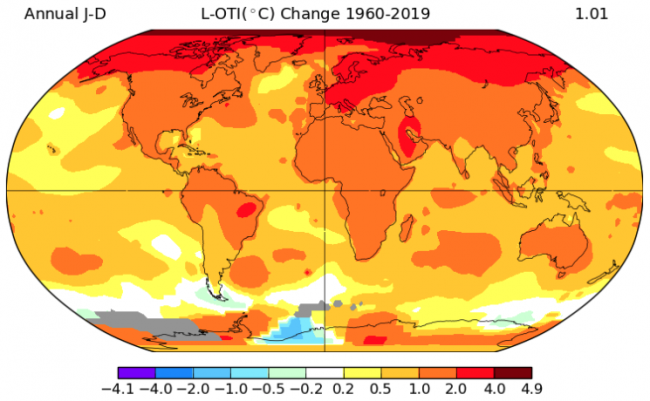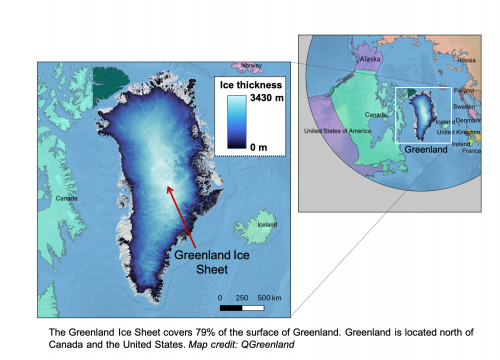Data Puzzle: On a Budget
Rising temperatures indicate that Earth's energy budget is out of balance. However, not all warming is equal. The Arctic is currently warming at a rate faster than the global average, a phenomenon known as Arctic amplification. In this Data Puzzle, students analyze authentic Arctic datasets to construct explanatory models for the following question, "Why might the Arctic be warming faster than other places on Earth?"
Context for Use
This Data Puzzle is part of a larger collection of Data Puzzle resources that combine classroom-friendly datasets with Ambitious Science Teaching practices to help students make sense of phenomena!

Map showing trends in mean air temperature over the period from 1960 to 2019. Notice that the Arctic is dark red, indicating air temperatures in this region having increased by nearly 4°C over this 60-year period. Image from NSIDC.
Goals Header
What Students Will Do
- Analyze and interpret incoming and outgoing energy data from the Arctic to evaluate amplified warming in the Arctic.
- Construct conceptual models to explain how outgoing longwave energy (heat) from the Arctic is contributing to the Arctic amplification.
Teaching Materials
Description
Days 1-2
Part 1 (30 minutes) Eliciting Students' Ideas
- Students watch this "Surface Matters" video and work collaboratively to observe and explain why asphalt is hot and grass is cool on the same hot summer day.
Part 2 (50 minutes) Identifying Important Science Ideas
- Students engage with an interactive reading to 1) identify similarities between the "Surface Matters" video and the work of Dr. Jen Kay, an atmospheric scientist who studies the changing Arctic energy budget, and 2) make a prediction as it relates Dr. Jen Kay's research question, "why might the Arctic be warming faster than other places on Earth?" (a phenomenon known as Arctic amplification)
Part 3 (40 minutes) Supporting Ongoing Changes in Thinking
- Students test their Arctic amplification prediction by analyzing satellite datasets of shortwave (solar) energy coming to and longwave (heat) energy going from the Arctic over the period from 2000-2018.
Day 3
Part 4 (60 minutes) Constructing Evidence-Based Explanations
- Students reflect on evidence gathered during parts 1-3 and construct a final explanatory model for question, "Why might the Arctic be warming faster than other places on Earth?"





